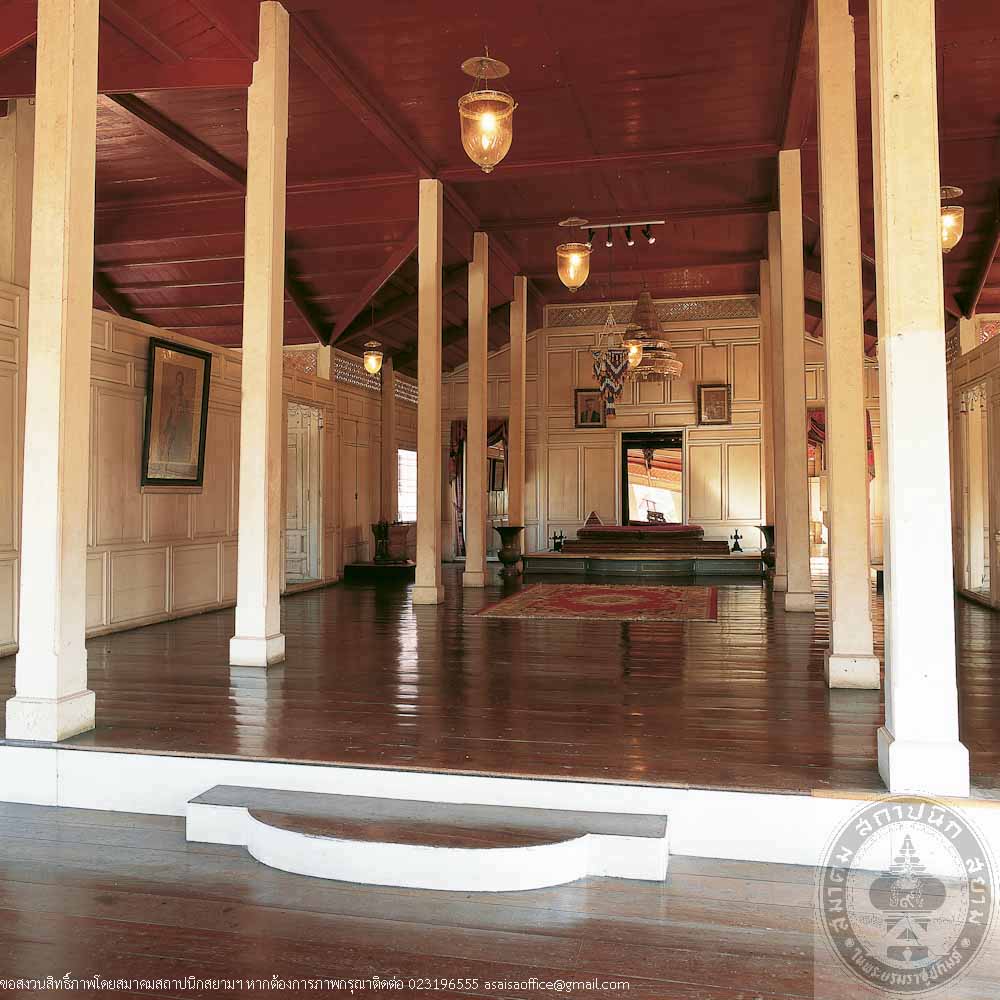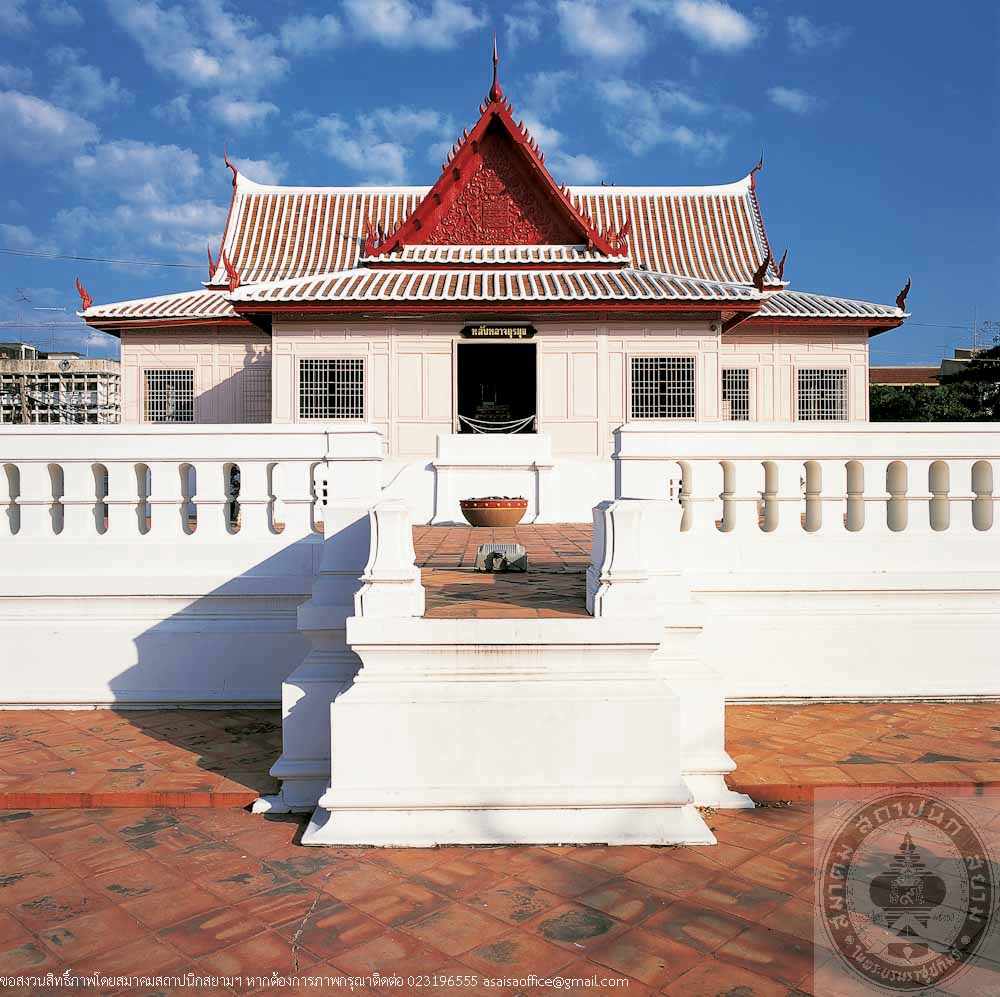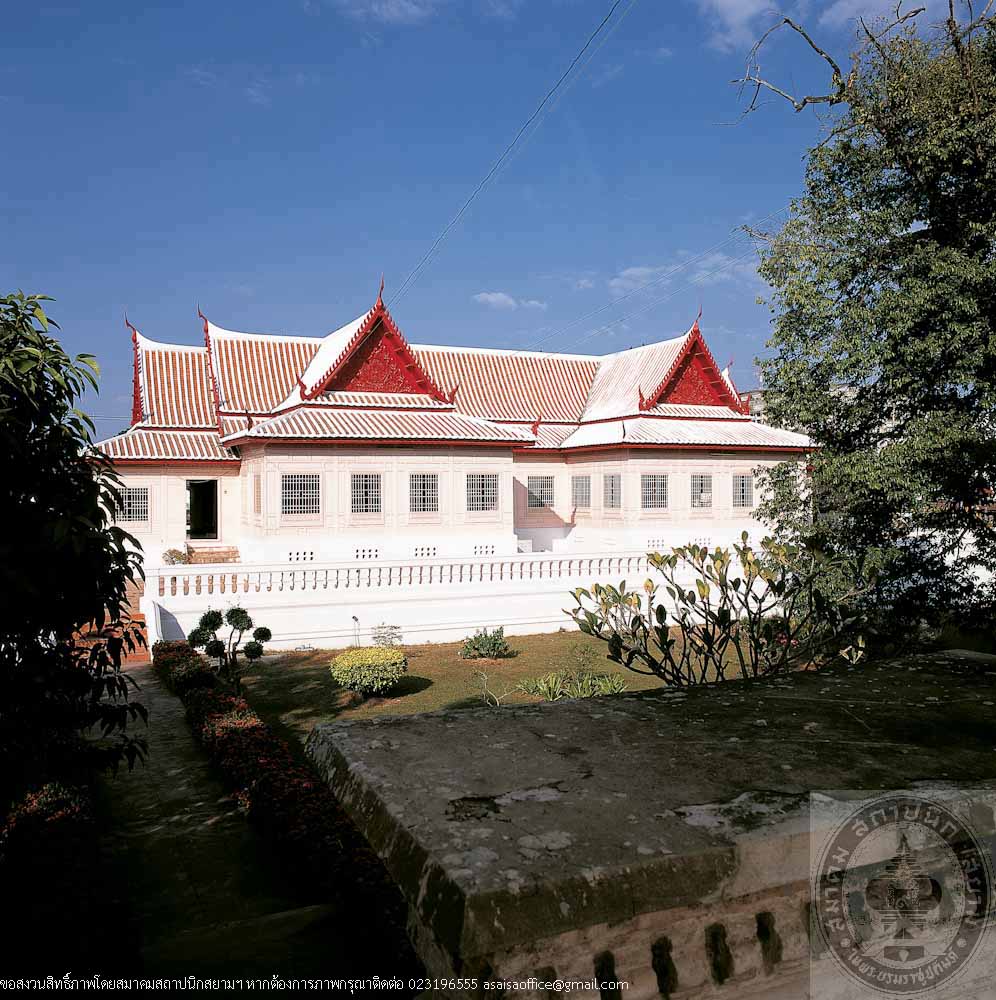พระราชวังจันทรเกษม
พระราชวังจันทรเกษม
ที่ตั้ง พิพิธภัณฑสถานแห่งชาติจันทรเกษม ถนนอู่ทอง ตำบลหัวรอ อำเภอพระนครศรีอยุธยา จังหวัดพระนครศรีอยุธยา
สถาปนิก/ผู้ออกแบบ กรมขุนราชสีหวิกรม (พระองค์เจ้าชุมสาย) พระยาราชสงคราม (ทัต หงสกุล)
ผู้ครอบครอง กรมศิลปากร
ปีที่สร้าง รัชกาลที่ 4
ปีที่ได้รับรางวัล พ.ศ. 2537
ประวัติ
พระราชวังจันทรเกษม สร้างขึ้นราวปี พ.ศ. 2120 รัชสมัยสมเด็จพระมหาธรรมราชาธิราช เพื่อเป็นที่ประทับของสมเด็จพระนเรศวรมหาราช พระราชวังนี้เคยเป็นที่ประทับของพระเจ้าแผ่นดินและพระมหาอุปราชถึง8 พระองค์ แต่หลังจากเสียกรุงครั้งที่ 2 เมื่อ พ.ศ. 2310 แล้ว พระราชวังนี้ก็เหลือแต่ซากปรักหักพังและถูกทิ้งร้างมาจนถึงรัชสมัยพระบาทสมเด็จพระจอมเกล้าเจ้าอยู่หัว จึงทรงพระกรุณาโปรดเกล้าฯ ให้บูรณะ และก่อสร้างอาคารขึ้นใหม่เพื่อใช้เป็นที่ประทับในคราวเสด็จประพาสพระนครศรีอยุธยา พระราชทานนามว่า “พระราชวังจันทรเกษม” อาคารและสิ่งก่อสร้างต่างๆ ที่สร้างในครั้งนั้นได้แก่ กำแพงวัง หมู่พระที่นั่งพิมานรัตยา และศาลาเชิญเครื่อง เคยเป็นที่ประทับของพระบาทสมเด็จพระจุลจอมเกล้าเจ้าอยู่หัว พระบาทสมเด็จพระจุลจอมเกล้าเจ้าอยู่หัวเคยพระราชทานให้เป็นที่ว่าการมณฑลกรุงเก่าใน พ.ศ. 2422
พลับพลาจตุรมุขเป็นอาคารเครื่องไม้บนชานพลับพลาก่ออิฐถือปูน ลักษณะเป็น “ฉมุข” หรือ 6 มุข เพราะมีมุขหน้า 3 มุข มุขหลัง 3 มุข หลังคามุงกระเบื้องประดับช่อฟ้า ใบระกา สันนิษฐานว่าออกแบบโดยพระยาราชสงคราม (ทัต หงสกุล) เคยใช้เป็นท้องพระโรงของรัชกาลที่ 4
พระที่นั่งพิสัยศัลลักษณ์ เป็นหอ 4 ชั้น ความสูงประมาณ 22 เมตร รูปแบบของสถาปัตยกรรมไทยอิทธิพลตะวันตกผสมจีน ใช้เป็นอาคารสำหรับส่องกล้องดูดาว สันนิษฐานว่าออกแบบโดยกรมขุนราชสีหวิกรม (พระองค์เจ้าชุมสาย)
ในรัชสมัยพระบาทสมเด็จพระจุลจอมเกล้าเจ้าอยู่หัว สมเด็จกรมพระยาดำรงราชานุภาพ ได้ทรงแนะนำให้พระยาโบราณราชธาณินทร์ จัดตั้งพิพิธภัณฑ์ขึ้นที่พระราชวังจันทรเกษม และได้พัฒนามาเป็นพิพิธภัณฑสถานแห่งชาติจันทรเกษมในปัจจุบัน ซึ่งมีโบราณวัตถุและศิลปวัตถุที่สำคัญเก็บรักษาและจัดแสดงไว้เป็นจำนวนมาก รัชสมัยพระบาทสมเด็จพระมงกุฎเกล้าเจ้าอยู่หัว ได้มีการก่อสร้างอาคารสโมสรเสือป่า ตั้งอยู่บริเวณด้านใกล้ตลาดหัวรอ เป็นเรือนปั้นหยา หลังคามุงกระเบื้องดินเผาแบบเรียบง่าย สร้างขึ้นเพื่อเป็นสถานที่ชุมนุมกองเสือป่าของมณฑลกรุงเก่า ปัจจุบันใช้เป็นคลังเก็บโบราณวัตถุ ศิลปวัตถุ และห้องช่างของพิพิธภัณฑสถานแห่งชาติจันทรเกษม

พระราชวังจันทรเกษม

พระราชวังจันทรเกษม

พระราชวังจันทรเกษม

พระราชวังจันทรเกษม

พระราชวังจันทรเกษม

พระราชวังจันทรเกษม

พระราชวังจันทรเกษม
-

พระราชวังจันทรเกษม
-

พระราชวังจันทรเกษม
-

พระราชวังจันทรเกษม
-

พระราชวังจันทรเกษม
-

พระราชวังจันทรเกษม
-

พระราชวังจันทรเกษม
-

พระราชวังจันทรเกษม
Chantarakasem National Musuem
Location U Thong Road, Tambon Hau Ro, Amphoe Phra Nakhon Si Ayutthaya, Phra Nakhon Si Ayutthaya Province
Architect/Designer Krommakhun Ratchasihaeikrom (Prince Jumsai)
Phraya Ratchasongkram (That Hongsakul)
Proprietor Fine Arts Department
Date of Construction King Rama IV period
Conservation Awarded 1994 AD.
History
Chantarakasem Palace was originally established circa 1577 AD., King Maha Thammaracha of Ayutthaya period as a residence for King Naresuan the Great when he was the Crown Prince. After Ayutthaya was defeated by the Burmese in 1767, the palace was deserted until King Rama IV of Rattanakosin period had the palace reconstructed and new building built to be used as his accommodation during his visits to Ayutthaya. The buildings built in that period are the palace walls, Phra Tho Nang Phiman Rataya group, Phra Thi Nang Phisaisallak, and Phlabphla Chaturamuk.
Phra Thi Nang Phiman Rataya is a group of four building that was the King Rama IV’s residential quarter. King Rama V had the office of Monthol Krung Kao situated here 1899.
Phlabphla Chaturamuk (Four-porched Pavilion) is a wooden structure built on an ancient remains of brick masonry base. By actual physical feature, this pavilion is 6-porched comprises 3 porches in the front and 3 in the back. It is believed that designer was Phraya Ratchasongkram (That Hongsakul). This pavilion functioned as the Throne Hall.
Phra Thi Nang Phisaisallak is a 4-storey tower height 22 metres, situated on the southwestern side of Chantarakasem Palace compound. Its architecture is Thai sty;e with Western and Chinese influences, presumably designed by Krommakhun Ratchasihawikrom (Prince jumsai). Its originals function was for stargazing.
In King Rama V’s reign, Somdet Krommaphraya Damrongrajanubhab has advised Phraya Boranratchathanin, the Governor of Ayutthaya, to establish a museum at Chantarakasem National Museum, where a large number or significant ancient objects and are kept and exhibited.
Later, King Rama VI’s reign, Samoson Sua Pa (Scouts club) was added to the compound. The building is simple, one-story, hipped roof with terracotta roof tiles. It used to be a Scouts Club House of Monthol Krung Kao (Ayutthaya Administrative Zone). At present, it houses the museum’s storage for ancient objects and art objects, and office of technicians.